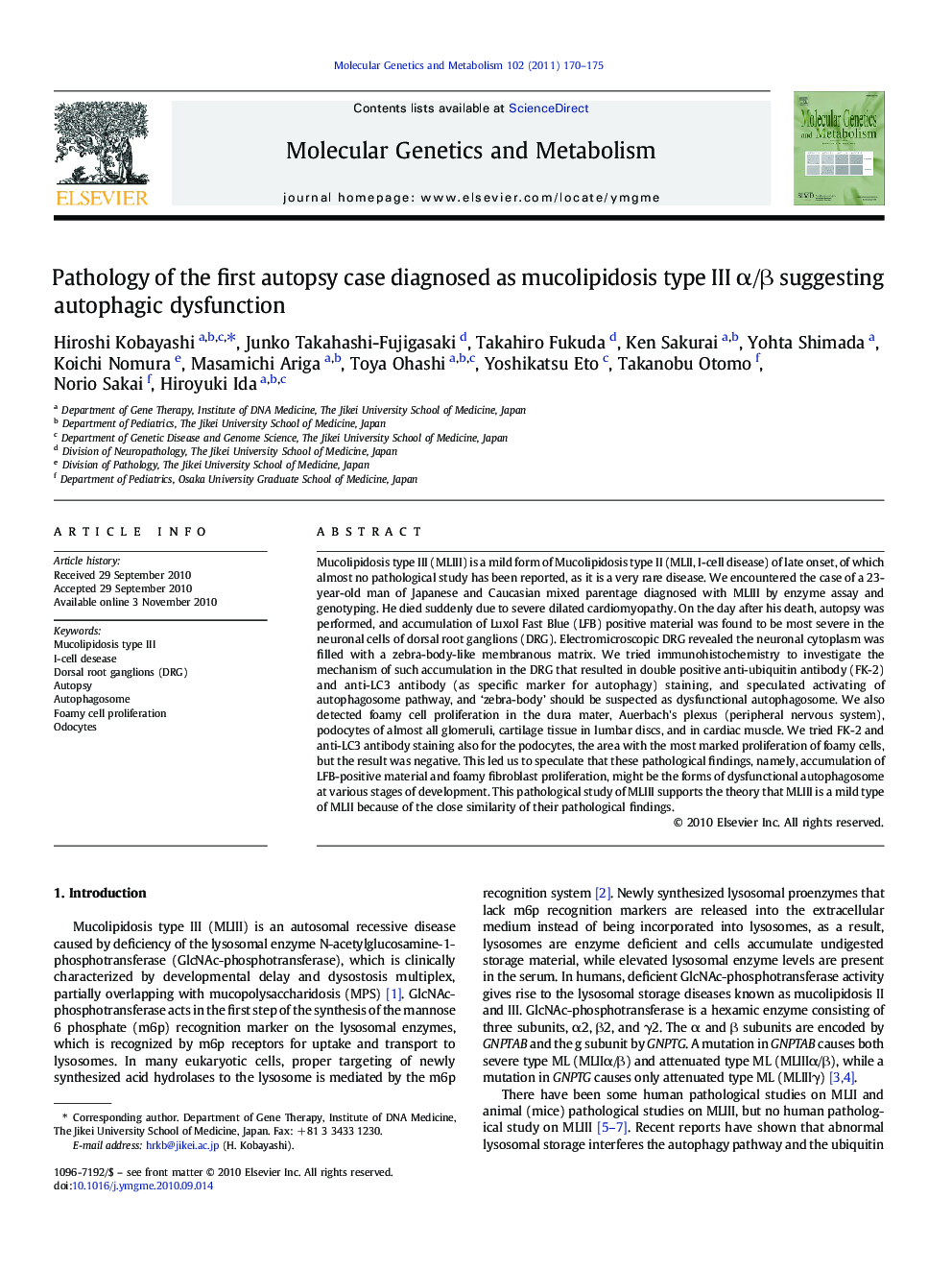| کد مقاله | کد نشریه | سال انتشار | مقاله انگلیسی | نسخه تمام متن |
|---|---|---|---|---|
| 1999224 | 1065846 | 2011 | 6 صفحه PDF | دانلود رایگان |

Mucolipidosis type III (MLIII) is a mild form of Mucolipidosis type II (MLII, I-cell disease) of late onset, of which almost no pathological study has been reported, as it is a very rare disease. We encountered the case of a 23-year-old man of Japanese and Caucasian mixed parentage diagnosed with MLIII by enzyme assay and genotyping. He died suddenly due to severe dilated cardiomyopathy. On the day after his death, autopsy was performed, and accumulation of Luxol Fast Blue (LFB) positive material was found to be most severe in the neuronal cells of dorsal root ganglions (DRG). Electromicroscopic DRG revealed the neuronal cytoplasm was filled with a zebra-body-like membranous matrix. We tried immunohistochemistry to investigate the mechanism of such accumulation in the DRG that resulted in double positive anti-ubiquitin antibody (FK-2) and anti-LC3 antibody (as specific marker for autophagy) staining, and speculated activating of autophagosome pathway, and ‘zebra-body’ should be suspected as dysfunctional autophagosome. We also detected foamy cell proliferation in the dura mater, Auerbach's plexus (peripheral nervous system), podocytes of almost all glomeruli, cartilage tissue in lumbar discs, and in cardiac muscle. We tried FK-2 and anti-LC3 antibody staining also for the podocytes, the area with the most marked proliferation of foamy cells, but the result was negative. This led us to speculate that these pathological findings, namely, accumulation of LFB-positive material and foamy fibroblast proliferation, might be the forms of dysfunctional autophagosome at various stages of development. This pathological study of MLIII supports the theory that MLIII is a mild type of MLII because of the close similarity of their pathological findings.
Journal: Molecular Genetics and Metabolism - Volume 102, Issue 2, February 2011, Pages 170–175